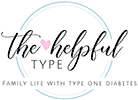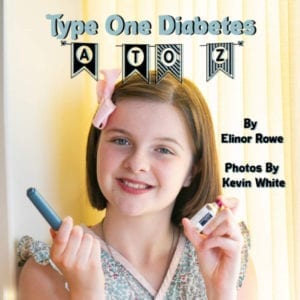
20 May Diabetes Waste and Sustainability
Listen to Your Mother (Earth)…
In honor of recently celebrated Mother’s Day and Earth Day, here’s a post about Mother Earth. The tie in is a bit of a stretch, but we were inspired by Earth Day celebrations, posts, and articles focused on environmental concerns. We’re trying to reduce our use of single-use plastic, and we’ve succeeded in almost every area except diabetes supplies. Many of the products that Ellie uses to manage type one diabetes (T1D), including glucose test strips, lancets, and the occasional insulin pens, are made of plastic and are designed to be used once and discarded.
Ellie’s health is our number one priority. We’ll always put diabetes management above everything, including sustainability, but surely the two can’t be blatantly, constantly at odds?
When it comes to diabetes supplies, it’s important to know whether your supplies can go in the recycling bin, the trash, or a biohazard container. We’re breaking it down, sharing sources, and seeking your suggestions for how to reduce the environmental impact while still managing T1D effectively.
Here’s what we’re doing, and, yes, we can always do more…

Recycling what we can
Ellie uses an insulin pump (Tandem T-Slim) with Dexcom G6 continuous glucose monitor (CGM). She still has insulin pens for injections to treat ketones and for travel (as a backup if her pump fails). The supplies are encased in plastic and shipped with an abundance of cardboard packaging to ensure safe delivery. We recycle all cardboard packaging (no brainer).
Recyclable diabetes supplies will feature the recycling symbol on their packaging. Be sure to closely read the label in case only certain parts of the supplies are recyclable. For example, the Medtronic Mio sets, which Ellie used for 4 years with the Medtronic 670G, are 95% recyclable as long as the needle is removed. (FYI, The directions for your insulin pump site insertion process include directions on safely removing the needle.)
Properly disposing of supplies
After we use a syringe or a lancet, we put it directly into a strong plastic container with a tight lid. Metal containers work, too. The U.S. Food and Drug Administration (FDA) has a list of cleared sharps containers that are available through pharmacies, online retailers and medical suppliers. https://www.fda.gov/medical-devices/safely-using-sharps-needles-and-syringes-home-work-and-travel/sharps-disposal-containers
If you don’t want to buy a cleared sharps container, you can turn household supplies like a laundry detergent or liquid laundry softener container into a sharps container. Make sure it’s sturdy. Gallon milk jugs and plastic water bottles do NOT work. The exception: We’ve used a Powerade bottle for a portable sharps container.
Any medical sharps should be put in a biohazard container and dropped off at an appropriate waste site like a biohazard drop-off site controlled by your state or a local pharmacy or hospital. Call the pharmacy or hospital ahead of your visit to ensure they take sharps. Not every pharmacy or hospital does.
Beyond Type 1 lists diabetes supplies that should be put in a biohazard container:
- Pen needles
- Syringes
- Lancets
- Auto-injectors (for insulin)
- CGM sensors
- Insulin pump infusion sets
The supplies that can go in the garbage include:
- Alcohol swabs
- Blood test strips
- Decorative CGM patches/covers
- Decorative insulin pump patches/covers
- Ketone test strips
- Used insulin pens (without the needle attached)
- Used insulin vials
The main issue surrounding recycling diabetes supplies is the sharps (syringes, lancets, insertion devices, etc.). Many are fully integrated into diabetes products and supplies. Sharps cannot be recycled or trashed, so we safely dispose of them (see above) and try to adopt more eco friendly habits when and where we can.
Doing what we can outside of T1D management
We want to provide the best possible care for Ellie. It’s not easy being green, as Kermit famously says, and diabetes waste presents a challenge. Ellie’s health comes first, and we look for other areas where we can create environmentally friendly habits:

Using less plastic
We’re buying food and other products with less packaging or compostable packaging and shopping at local farmers’ markets when we can.
Ellie is leading our efforts to carry reusable water bottles instead of single-use plastic bottles. She always has her sticker festooned Hydro Flask. (Kudos to our kids. I literally don’t remember drinking water until my 30s. Is it possible I spent my teens and 20s consuming only Snapple and Diet Coke?)
We tote our own reusable grocery bags as much as possible. Our grocery store suspended this at the height of the pandemic but is back to encouraging BYOB– bring your own bag.
Fixing things instead of replacing them
If you can’t fix something yourself (with a YouTube tutorial, of course!), look up a local repair business that can. We’re trying to live by the adage repurpose, reuse, or recycle and keep things out of landfills.
Buying less and striving to buy responsibly
Ellie is a savvy consumer. After a lesson in her fashion and interior design class, she called attention to the devastating environmental impact of fast fashion (inexpensive clothing produced rapidly by mass-market retailers in response to the latest trends). We’re skipping retailers like Shein (an affordable global juggernaut in the fashion world that’s frequently scrutinized for its high carbon emission and record on workers’ rights). If you have a teen, you’ve heard of Shein and its lure of trendy styles at low prices. We’re trying to make what we have last, buy less, and choose better quality when we can.
This Earth Day, your family might have spent time gardening, hiking, floating, planting trees in your yard or community, picking up roadside trash as part of “Adopt a Street,” or simply gathering in the great outdoors. There is still a lot we can do to combat the effects of climate change even while living with and managing T1D. Drop us a line with your tips. We’re all trying to protect our health and our home (planet Earth).
Source material and additional info




